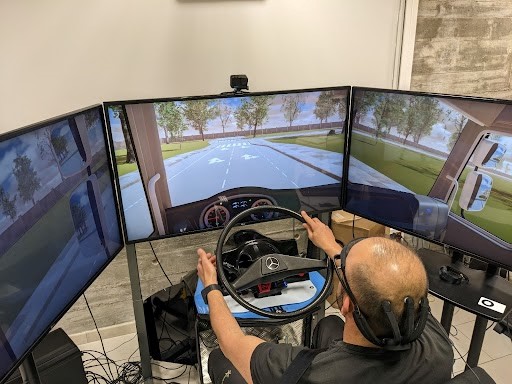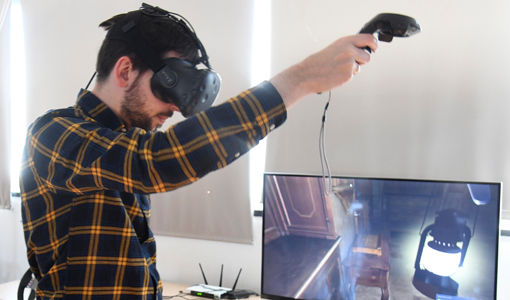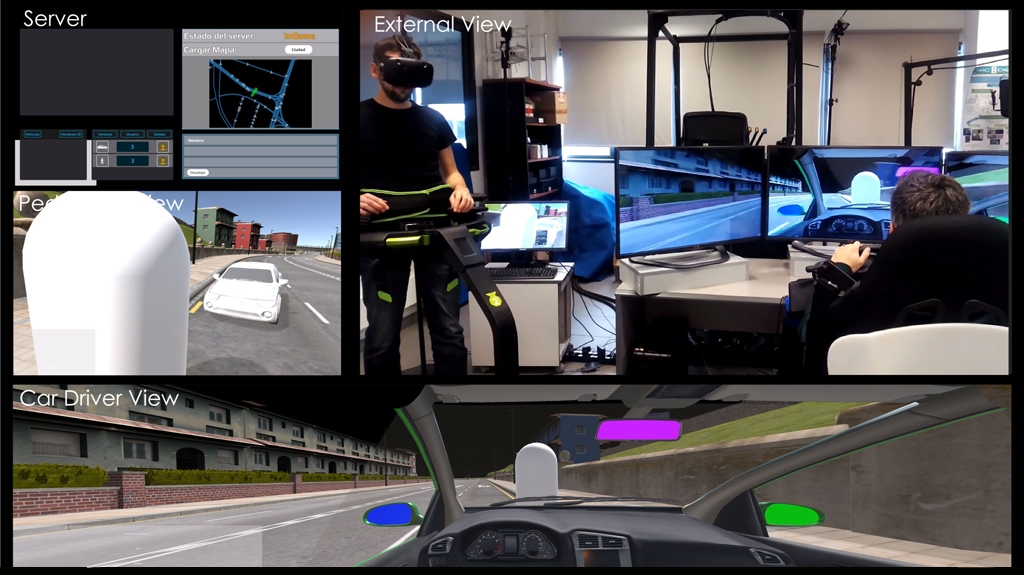Driving simulators: the key to minimizing risks and obtaining a driver’s license safely
Minimizing risks is one of the premises of road safety. In this regard, one of the allies to add a plus can and should be the integration of driving simulators. Technological solutions that can be of great help in learning to drive a vehicle and obtaining a driver’s license, avoiding damage and reducing risks.

We must keep in mind that an accident in a simulator doesn’t hurt anyone or cost money. Furthermore, specific situations, such as driving at night or in adverse weather, can be easily trained. However, in practice, these simulators are rarely used in driving schools. A study in which ITCL participated revealed that, despite their effectiveness, few countries in Europe regulate their use. And in these cases, it is always optional.
In research, these simulators are frequently used: in the automotive sector, for example, to test new safety devices (so-called ADAS, Advanced Driver Assistance Systems) or autonomous cars. But we’re now going to focus on another application: driver behavior studies, which is what we’ve been researching at ITCL in a series of projects for several years. It’s a line of research that is generating impact in taking steps forward in improving road safety.
WHAT IS A DRIVING SIMULATOR?
Let’s consider the simulator as a set of sensors that can capture a wide variety of driving-related data, because there certainly is. The core of a simulator is sophisticated software, for example, it runs complex calculations of the car’s movements based on its characteristics—such as dimensions and weight, engine power, road surface conditions, and driver handling. It also contains all the traffic, road, and weather information. This makes the software a very valuable source of data that can be leveraged in the studies mentioned above. More and more research centers are using this data for their studies.
In ITCL’s IRIS simulator software , we complement this data with the most important element for road safety: the human factor . We collect data from the driver himself, for example, to better understand dangerous actions. We thus complete what we call the data triangle : with data from all three aspects of driving: the driver, the vehicle, and the environment.
- Driver data, such as workload and fatigue, are important influences on driving ability. These are measured using sensors for brain activity, heart rate, sweat, etc. For most of these measurements, we rely on experts from other European organizations.
- Vehicle data can include speed and acceleration, pedal and steering wheel position, and more advanced information such as distance to the preceding vehicle.
- Environmental data refers to surrounding traffic (type, position, speed, etc.), infrastructure including roundabouts, signs, curbs, and also conditions such as rain, fog, daylight or night.
SAFETY RECOMMENDATIONS RECOGNISED BY EUROPEAN ADMINISTRATIONS
In the case of FitDrive, the consortium co-organized two sessions at the European Parliament in Brussels, where we presented recommendations for the new Driving Licence Directive . We worked with the European Commission to improve the upcoming update of the vehicle type-approval regulations—first, to make vehicle signals available to monitor driving behavior, and second, to include a definition of fatigue levels that allows for standardized driver warnings, authority checks, and the transfer of control from autonomous cars to the driver.

In addition, we hosted a conference with the Irish Secretary of State for Transport, presented FitDrive results at the European Commission’s booth at the TRA2024 Transport Research Arena in Dublin, and ITCL presented results at RTR2024 Road Transport Research in Brussels, reaching thousands of professionals. ITCL and BrainSigns jointly presented IRIS at the DSC2024 Driving Simulation Conference Europe in Strasbourg.
ITCL’s advanced data collection with IRIS driving simulators makes it possible to create this impact, which we hope can make our roads a little safer. And who knows, with the new European regulations, maybe we’ll see simulators in driving schools too.
ITCL DRIVING SIMULATOR PROJECTS
Some projects carried out in this line by ITCL that we highlight:
- SimuSafe: Leading a European consortium of 16 partners, which studied the usability and bias of simulators in road safety research. A system of car, motorcycle, bicycle, and pedestrian simulators interacting in a single simulated environment was created. This project conducted the study of simulators in driving schools with which we began this blog.
- Mindtooth : Development of a novel EEG device for measuring brain activity in a highly practical and accurate manner, also within a European consortium. EEG provides highly relevant information about a driver’s mental state, which influences their driving, but quality devices are often cumbersome and uncomfortable to use. Mindtooth is owned by the partner companies BrainSigns and Brain Products; ITCL collaborated on its application in driving simulators.
- Genius : In a national consortium led by Antolín, we monitor the vehicle cabin and the driver to understand the user’s cognitive and emotional state. This information will be used to improve driver comfort with different stimuli, which should ultimately lead to safer driving.
- FitDrive: This ongoing project, coordinated by ITCL as part of a European consortium, focuses on professional drivers such as truck drivers and delivery drivers. With the help of AI, the goal is to detect individual patterns in the data triangle that indicate the onset of fatigue, as well as other impairments that cause abnormal driving. Current fatigue sensors are ineffective because they are the same for all drivers, while each person reacts differently under these conditions.
It’s obvious that research alone doesn’t improve road safety; the participation of all other stakeholders is necessary. We work with authorities and industry to improve road safety with the results obtained.




